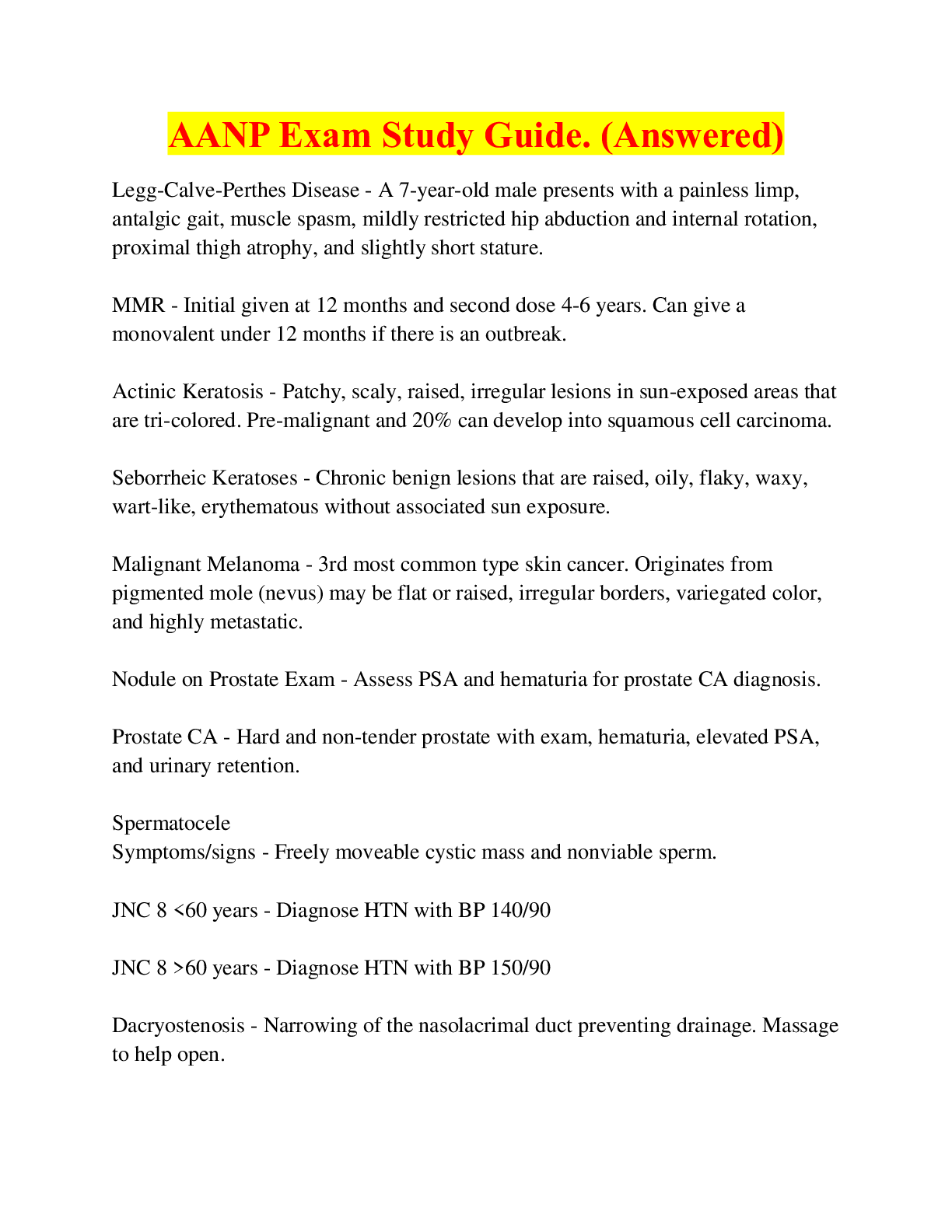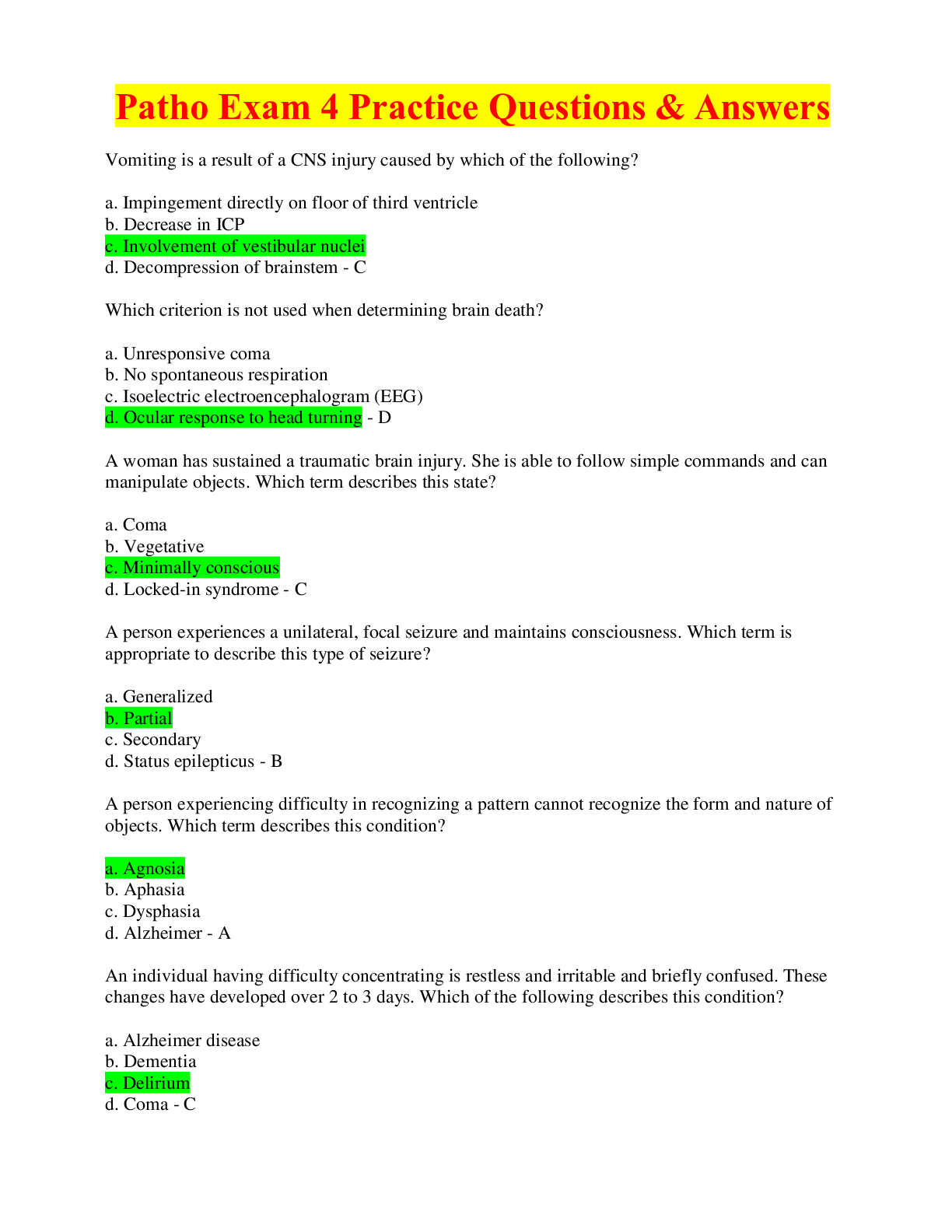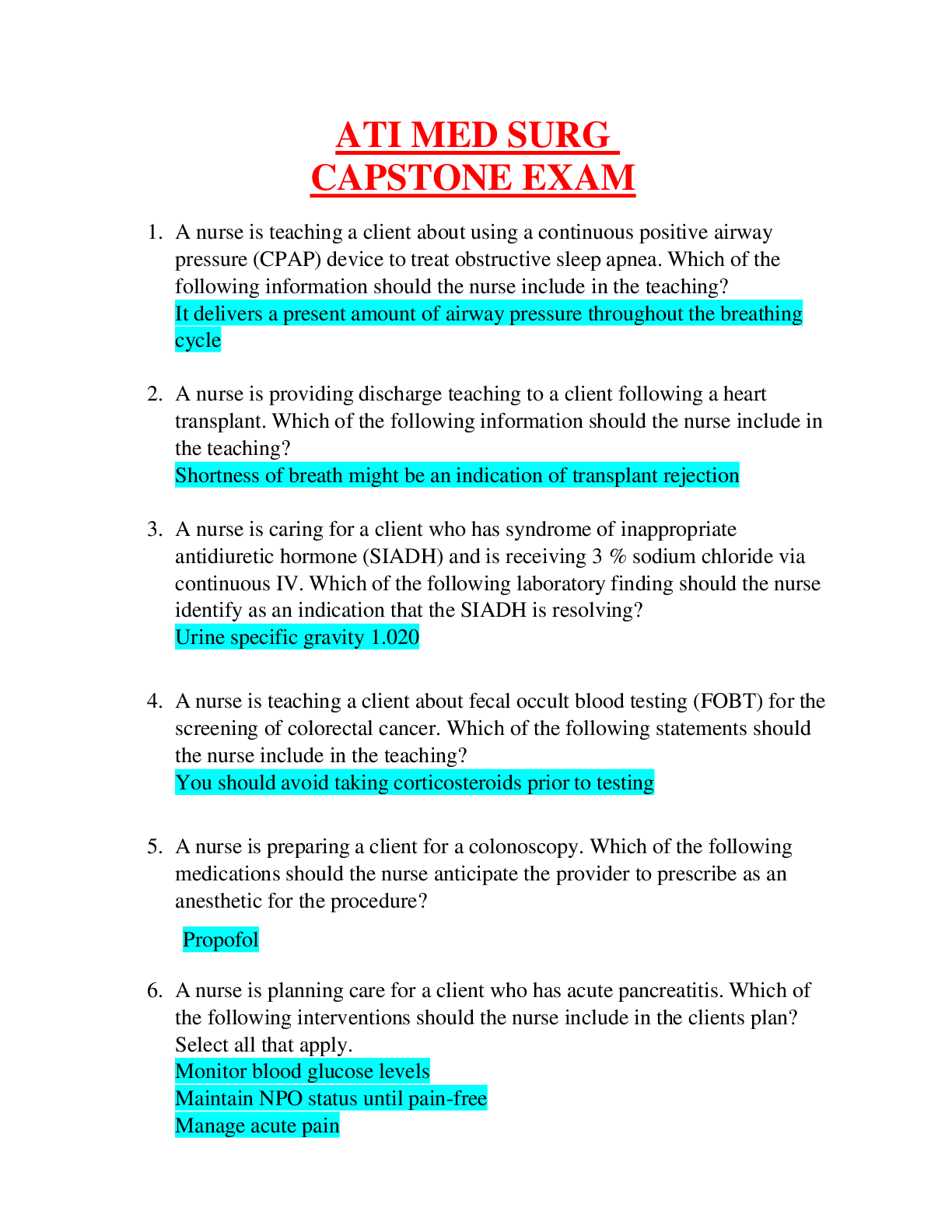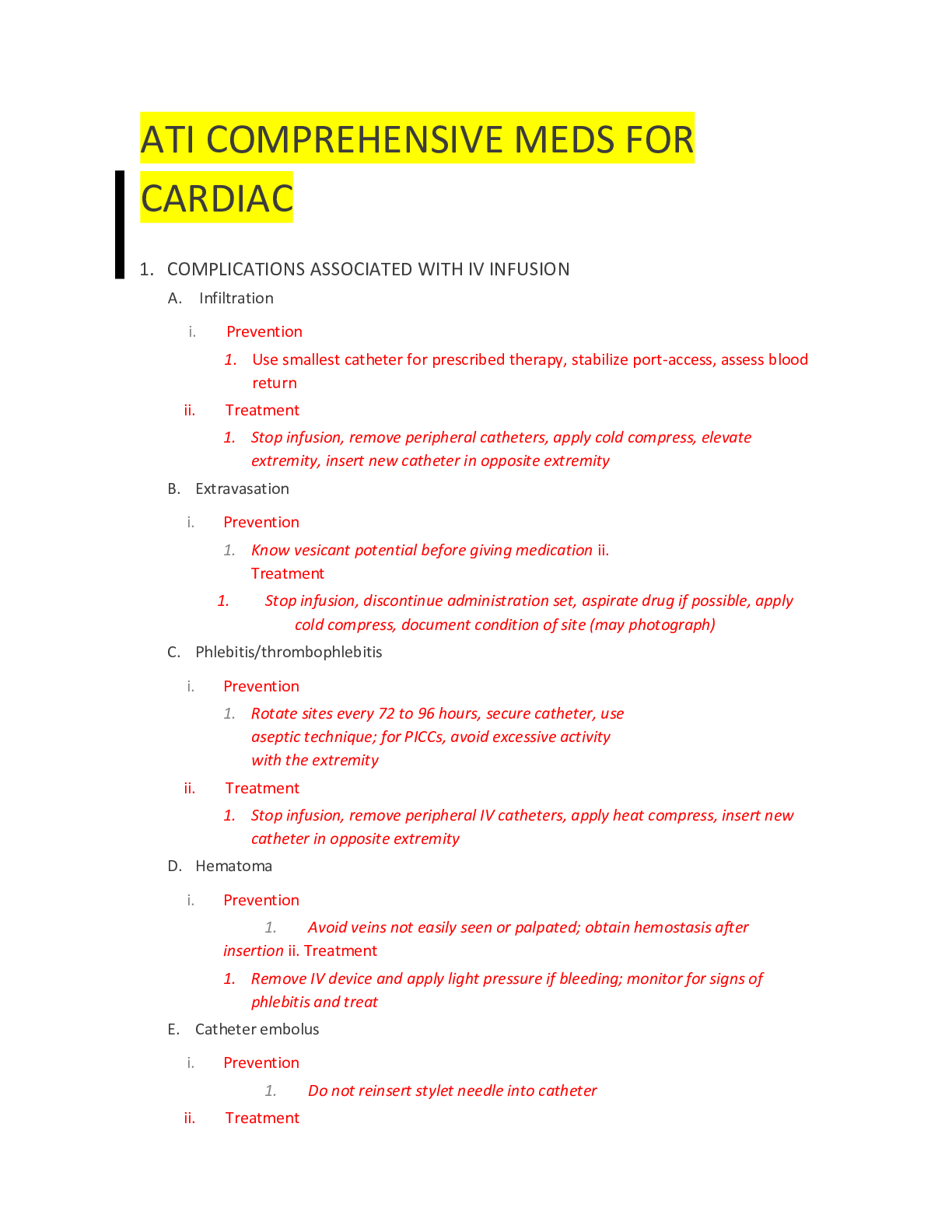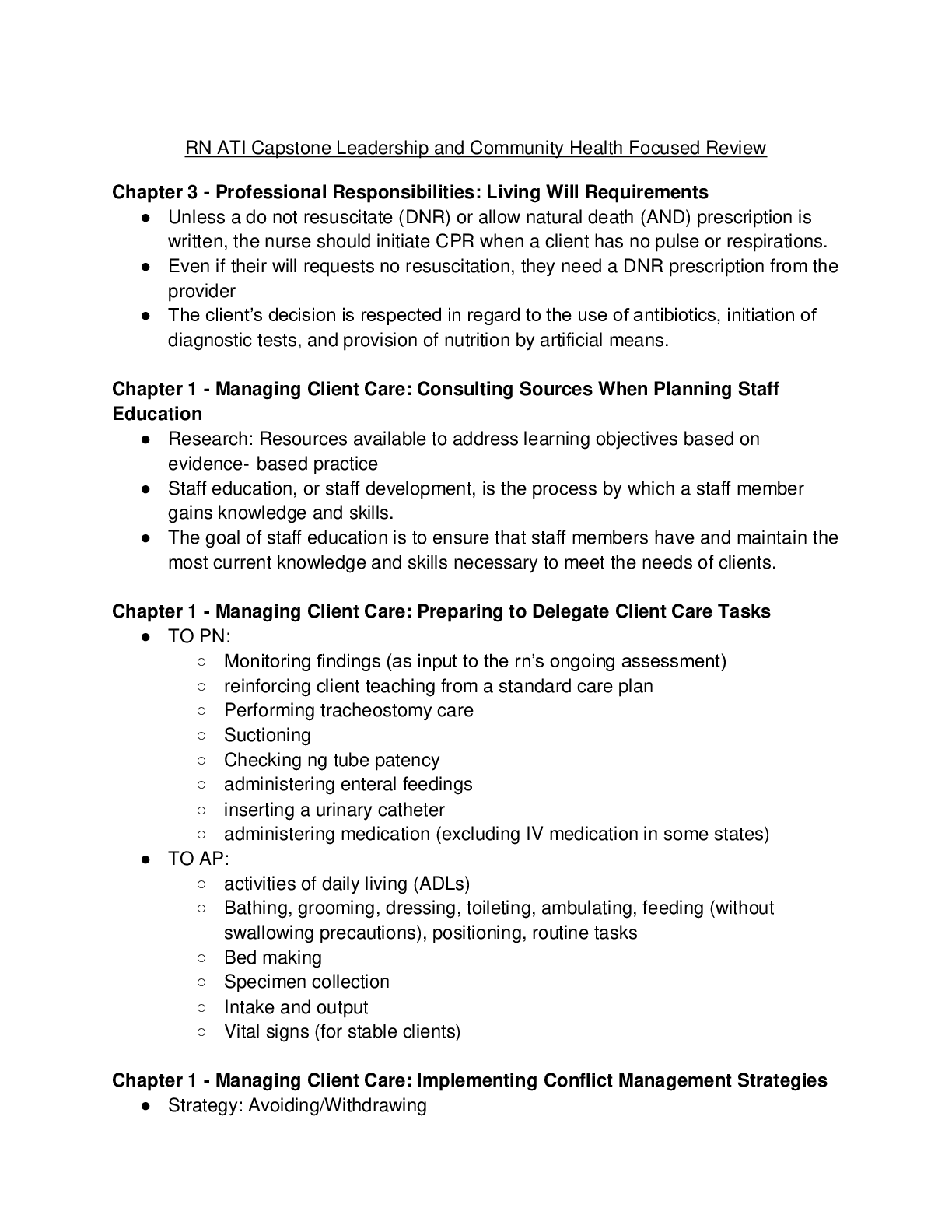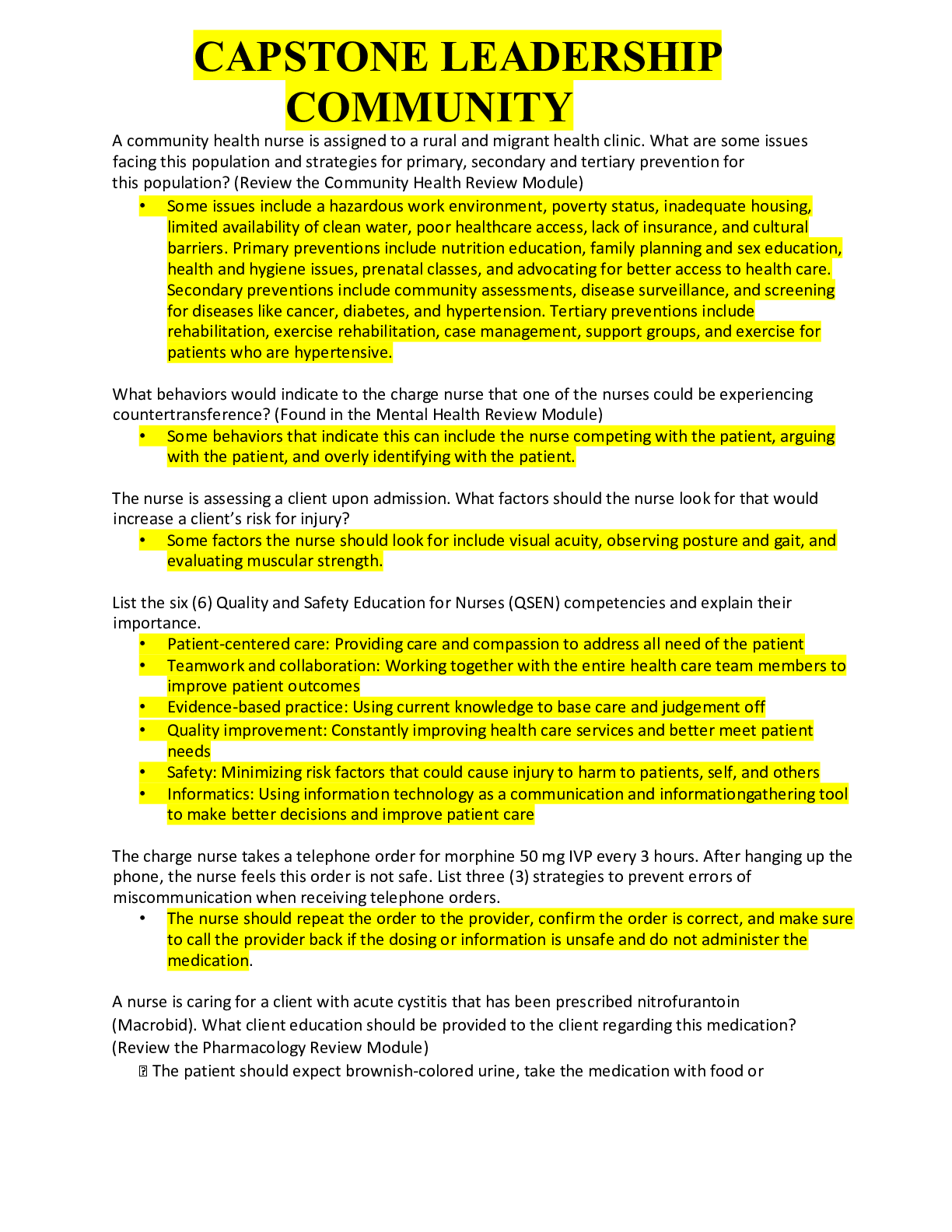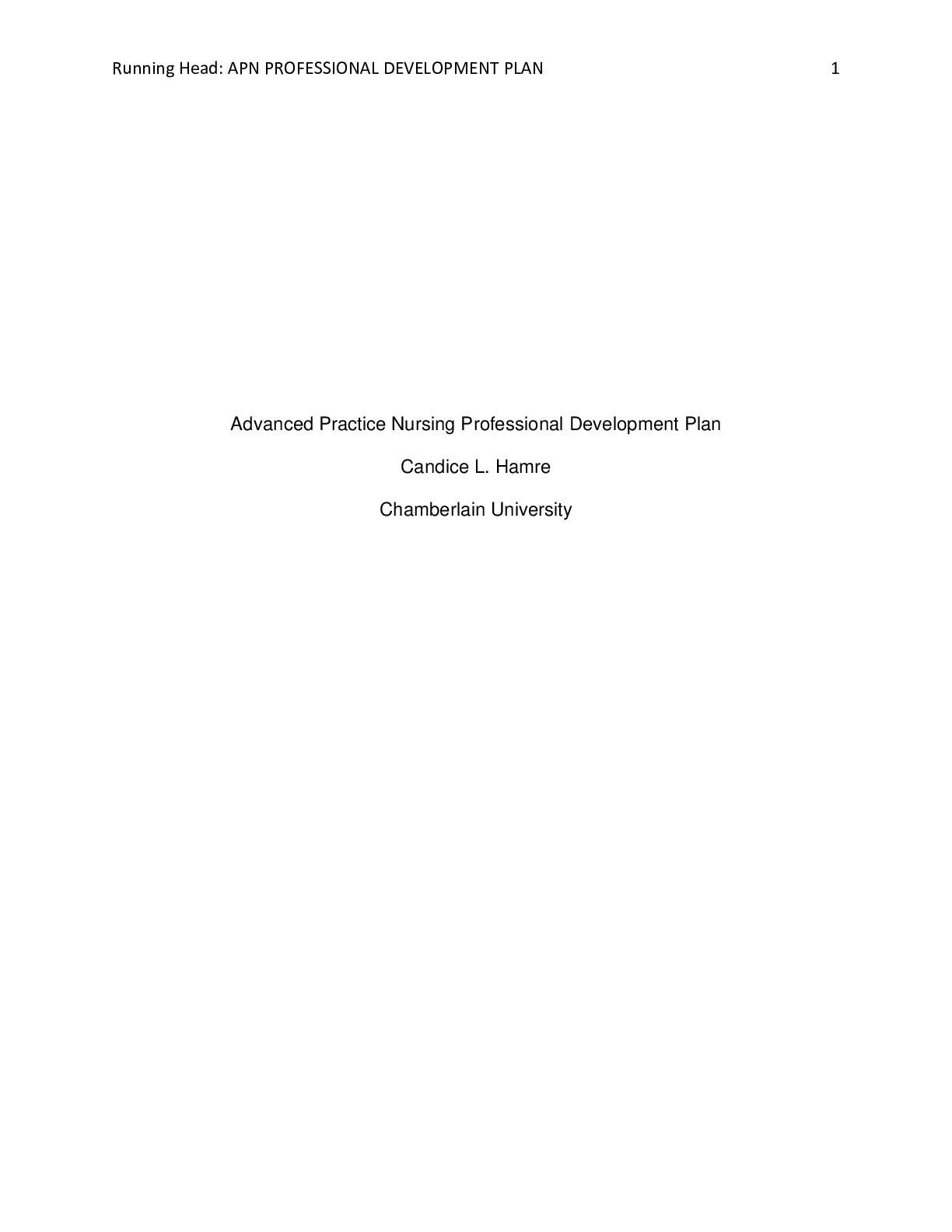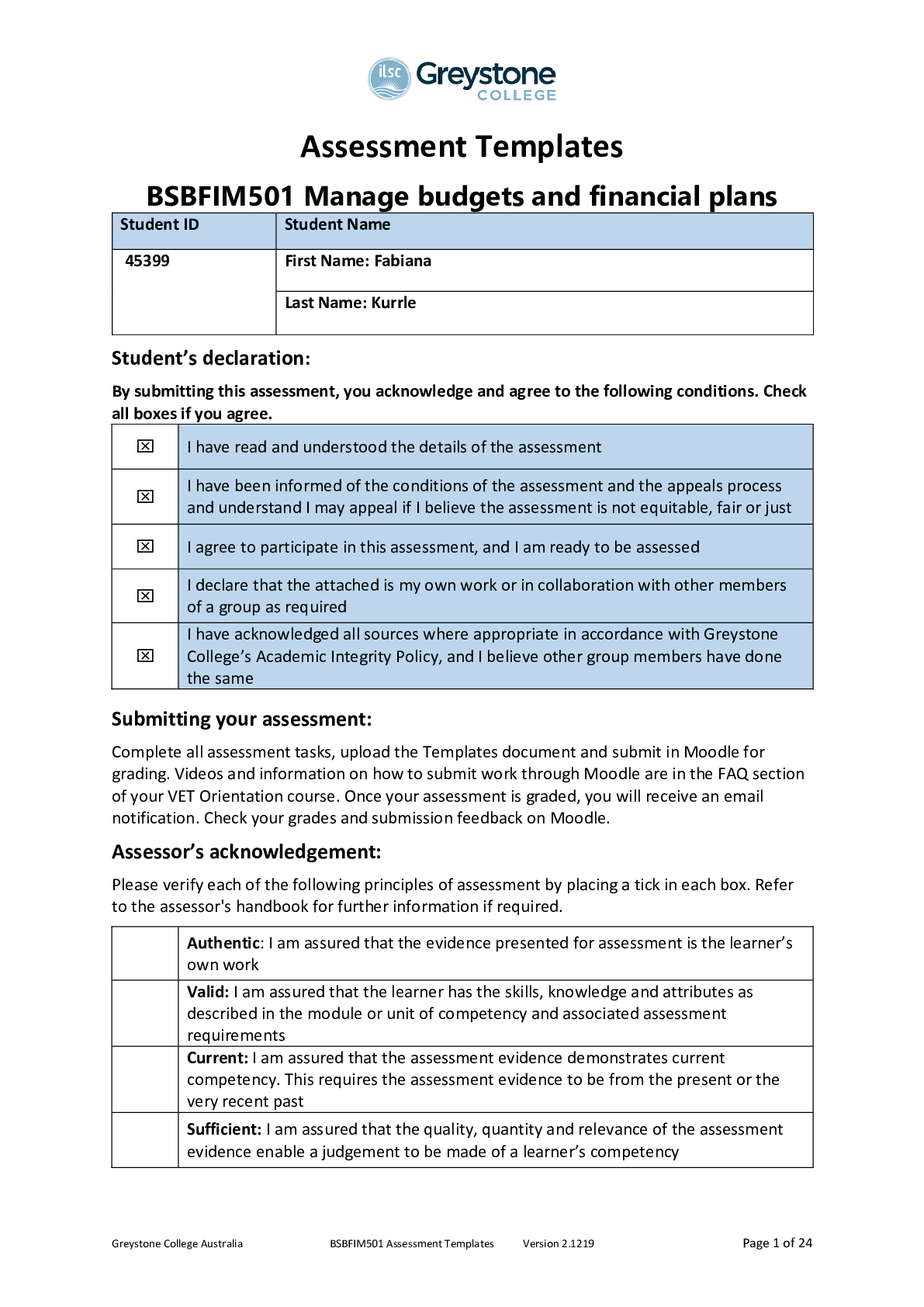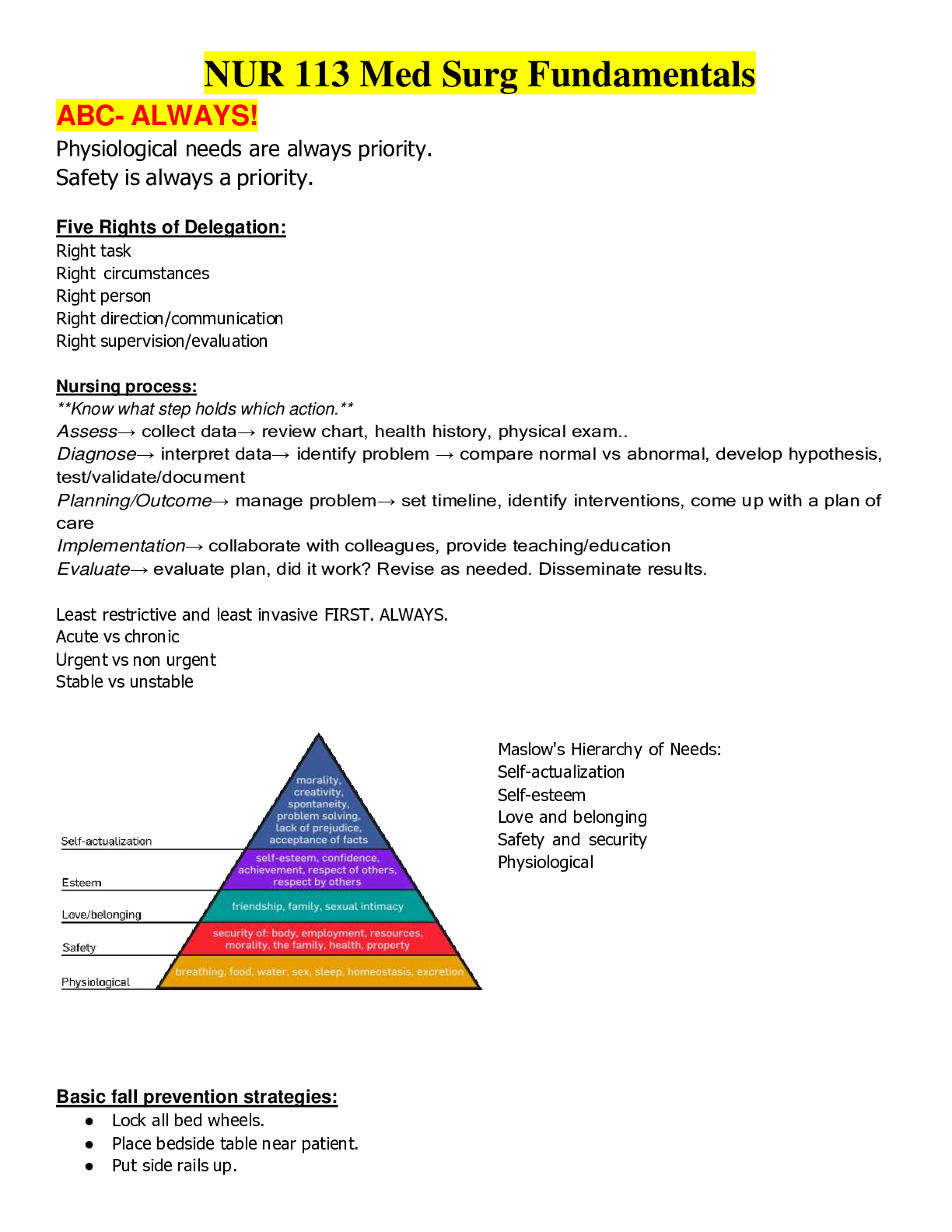*NURSING > STUDY GUIDE > NUR 113 Maternal Newborns study guide 2021, Chattahoochee Valley Community College (All)
NUR 113 Maternal Newborns study guide 2021, Chattahoochee Valley Community College
Document Content and Description Below
Ovum→ viable for 24 hours Sperm→ viable for 48-120 hours Quickening→ fluttering felt in the abdomen→ baby’s first movements Hegar’s sign→ softening and compressibility of the lower uter... us Chadwick’s sign→ deepened violet-blue color of the cervix and vaginal mucosa Goodell’s sign→ softening of the cervical tip Ballottement→ rebound of unengaged fetus Gravidity→ number of pregnancies Parity→ number of pregnancies that reach viability - Doesn’t matter if the baby is still born or alive Nullipara→ no pregnancies viable Primipara→ one pregnancy reached viability Multipara→ two or more pregnancies reached viability Viability→ fetus is viable, has reached gestational age to have a chance to survive if born right then - 23 weeks of gestational age is the typical age of viability Chloasma→ pigmentation of the face Linea nigra→ dark line from the belly button to the pubic area Striae gravidarum→ stretch marks Pica→ craving/eating non-food items like chalk or clay Percutaneous umbilical blood sampling→ aka cordocentesis - Blood is taken from the umbilical vein Chorionic villus sampling→ sample taken from the placenta - Patient needs a full bladder Lightening→ when the baby’s head descends into the birth canal Braxton Hicks→ irregular uterine contractions Nesting→ burst of energy before baby comes Cervical ripening→ cervix becomes soft and opens, begins to dilate Rupture of membranes→ amniotic sac filled with fluid that surrounds the baby ruptures - Aka water breaking Effleurage→ light circular strokes on the patient’s abdomen during contraction Reassuring fetal heart rate→ 110-160 beats per minute with increases and decreases Nonreassuring fetal heart rate→ related to hypoxia - Bradycardia or tachycardia of the baby - Absent variability - Late or variable decels Variability→ fluctuations of the fetal heart rate from baseline, either increased or decreased - Classifications: - Absent→ nonreassuring - Minimal→ less than 5 per minute - Moderate→ 6 to 25 per minute→ this is what you want to see - Marked→ more than 25 per minute - Can be episodic or periodic - Episodic→ not correlated with contractions - Periodic→ occur with contractions Contractions contain 3 distinct points: - Increment→ beginning of the contraction - Acme→ peak - Decrement→ end of the contraction when the pain begins to decrease Accelerations→ increase of heart rate above baseline - Normal - You want to see this, especially when the baby is stimulated - Reassuring Decelerations→ decrease of the heart rate below baseline - Early decelerations→ caused by the baby’s head being compressed - No intervention required - Late decelerations→ caused by placental insufficiency - Place mother on her side - Administer high flow oxygen - Elevate mother’s legs - Variable decelerations→ caused by umbilical cord compression - Place mother on her side - Administer high flow oxygen Fetal bradycardia→ less than 110 bpm for more than 10 minutes - Turn mother on her side - Administer high flow oxygen Fetal tachycardia→ more than 160 bpm for more than 10 minutes - Give IV bolus - Administer high flow oxygen Continuous internal fetal monitoring→ electrodes are placed on the baby's head - Membranes must rupture before you can do internal monitoring - Cervix must be at least 2 cm dilated Episiotomy→ manually clipping of the perineum so it doesn’t tear Perineal laceration - First degree→ tear goes through the skin, but that’s it - Second degree→ tear goes through the skin and into the muscles - Third degree→ tear goes through the skin, muscles, and involves the anal sphincter muscle - Fourth degree→ tear goes through the skin, muscles, anal sphincter muscle, and the anterior rectal wall Dystocia→ prolonged labor Cesarean birth→ delivery of the baby through the abdominal wall - Reasons for C-section: - Breech - Baby cannot fit through birth canal - Placenta previa [Show More]
Last updated: 2 years ago
Preview 1 out of 32 pages

Buy this document to get the full access instantly
Instant Download Access after purchase
Buy NowInstant download
We Accept:

Reviews( 0 )
$14.50
Can't find what you want? Try our AI powered Search
Document information
Connected school, study & course
About the document
Uploaded On
Jul 14, 2021
Number of pages
32
Written in
Additional information
This document has been written for:
Uploaded
Jul 14, 2021
Downloads
0
Views
30

